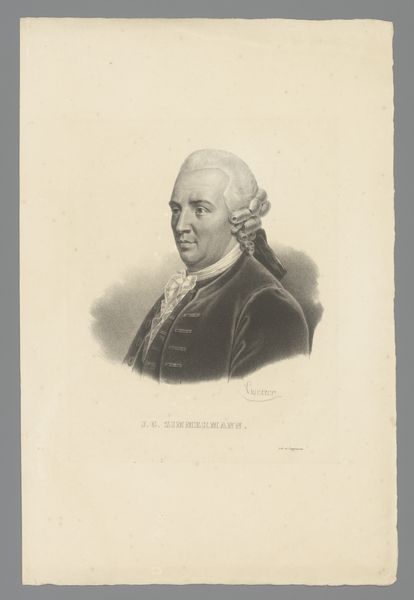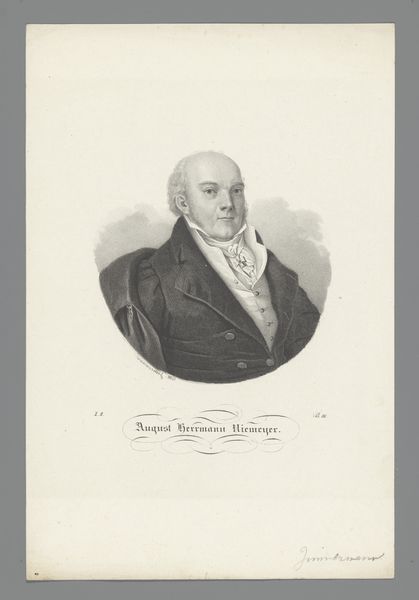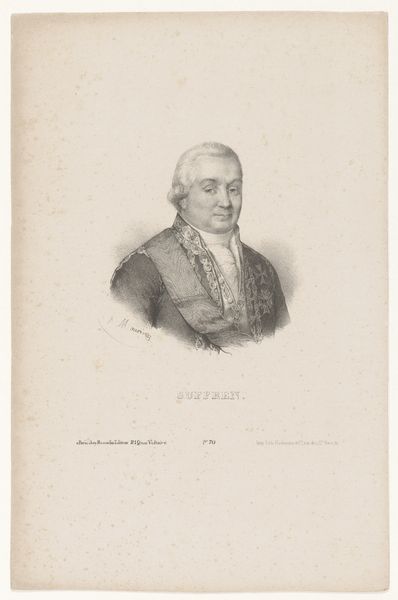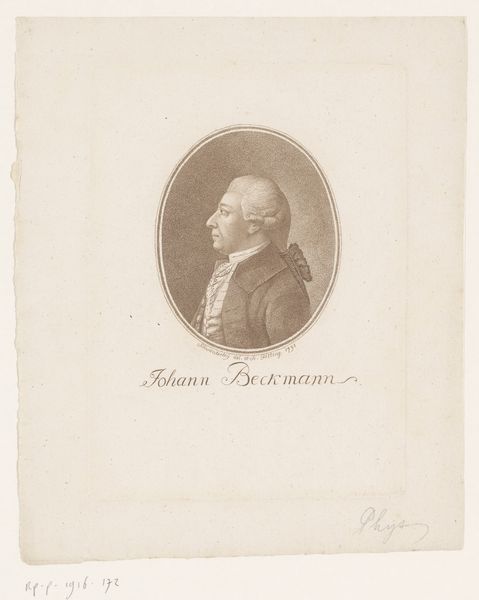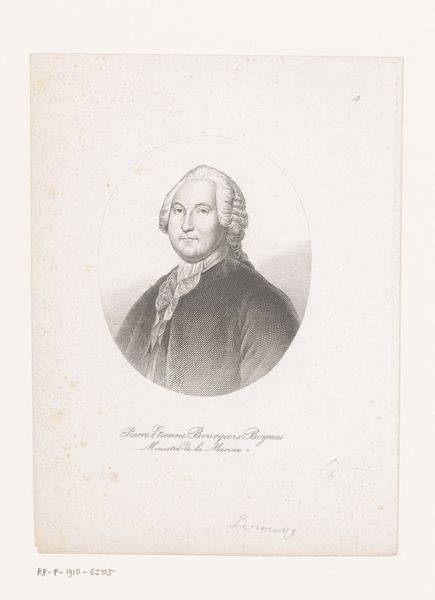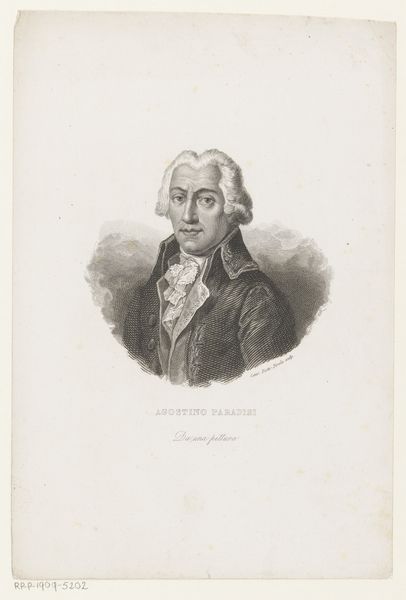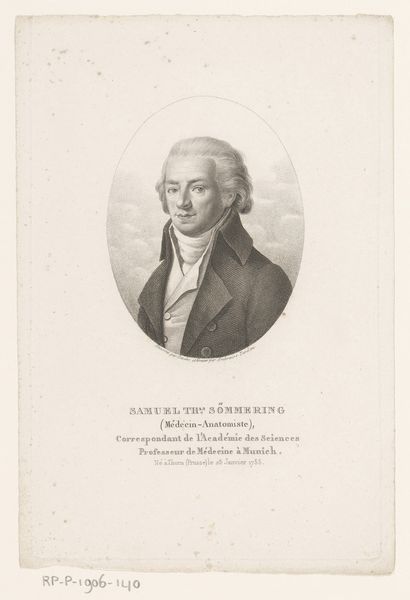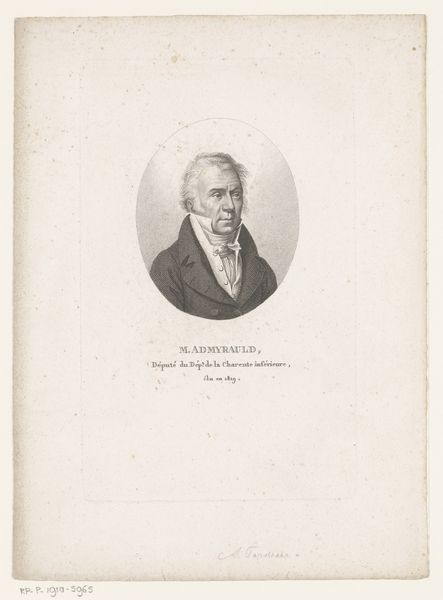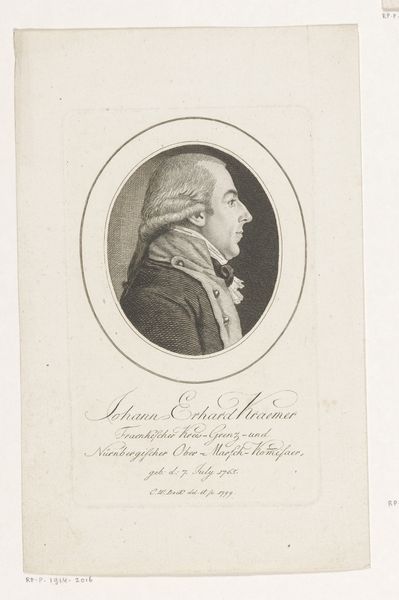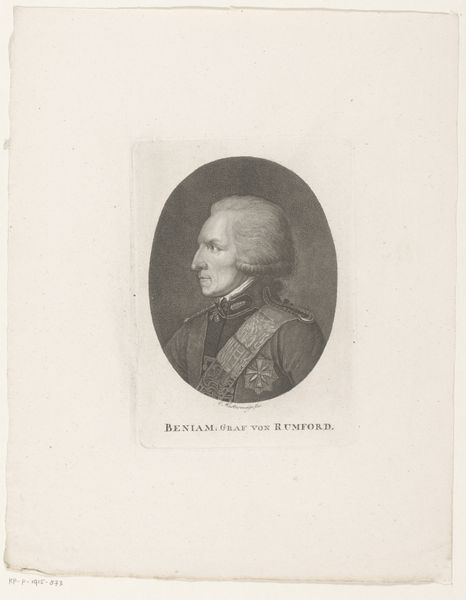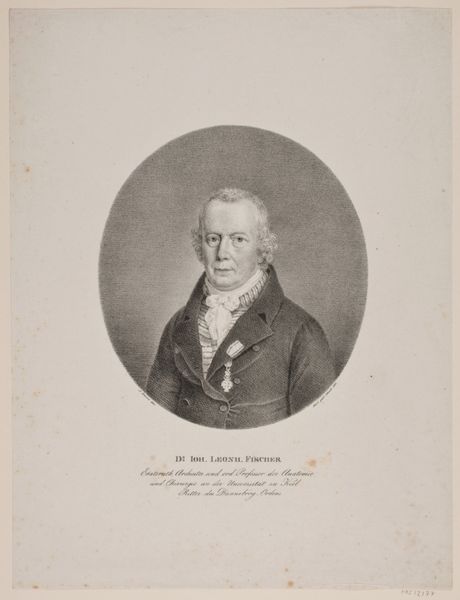
engraving
#
portrait
#
neoclacissism
#
old engraving style
#
academic-art
#
engraving
Dimensions: height 160 mm, width 107 mm
Copyright: Rijks Museum: Open Domain
Curator: This is a portrait of Dieterich Tiedemann, made in 1797 by Friedrich Wilhelm Bollinger. It's an engraving, currently held in the Rijksmuseum collection. What are your initial thoughts? Editor: My immediate impression is one of reserved authority. The subject's gaze is direct, yet there's an air of detached intellect. The monochrome engraving style enhances this sense of historical distance and formal decorum. Curator: Indeed, the Neoclassical style is evident in its emphasis on line, clarity, and balanced composition. Notice how the oval frame isolates Tiedemann, presenting him almost like a cameo. The formal restraint encourages a focus on the individual and perhaps reflects Enlightenment ideals of reason and order. Editor: It is striking that the man in the engraving, Dieterich Tiedemann, was a professor of philosophy and Greek Language, placing emphasis on those who contribute to academic fields and intellectual traditions. There seems to be no acknowledgement, though, of those without access to these elevated positions of society and status. Curator: Your observation prompts important questions about who gets memorialized and how, yet let's also consider the work’s intrinsic elements. Look at the masterful use of hatching and cross-hatching to define form and texture. The artist’s technical skill shapes the portrait into an idealized, enduring image, elevating its subject beyond the ordinary. Editor: Yet this idealization risks flattening complexities of character and socio-political inequalities. While technically adept, we should not excuse the artist's role in solidifying societal hierarchies. The elite class portrayed stood on the shoulders of othered groups, an issue the artwork refuses to touch upon. Curator: Well, whether this artistic rendering seeks to immortalize or erase histories is not explicitly seen on its formal surface. Nonetheless, your point reminds us of the ongoing need to engage critically with our visual past. Thank you for that perspective. Editor: Likewise, it is always a needed endeavor to explore new, perhaps radical ways of interpreting such artworks within the power systems that influence them.
Comments
No comments
Be the first to comment and join the conversation on the ultimate creative platform.
